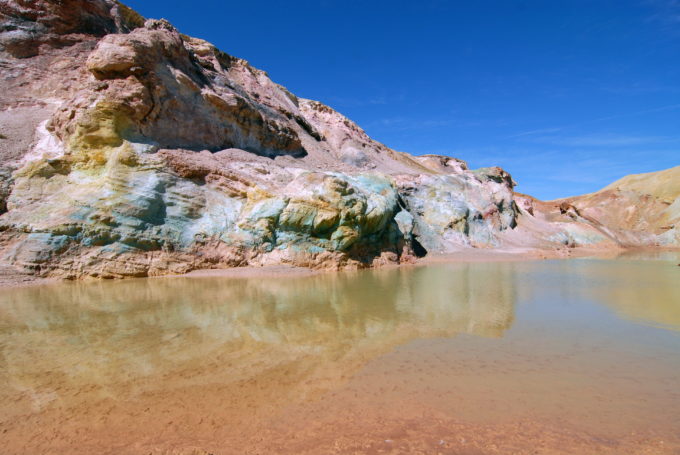Kapunda mine in situ recovery project
Challenge
Mining3 is working with in situ recovery (ISR) mining specialists, Environmental Copper Recovery (ECR), on a Commonwealth Government CRC-P (Cooperative Research Centre) grant which will fund a 2.5-year research program to better understand and resolve key ISR mining challenges— particularly in relation to environmental, social and economic impacts.
Recent technological improvements and the use of environmentally benign lixiviants (leaching agents) are broadening the potential application of ISR mining. The successful development of an ISR process to extract copper and other metals from diverse geological environments will be a step change in Australian mining. However, industry and communities want to know more about its value and impact – specifically environmentally.
Mining3 joins other industry and research partners—Thor Mining, Terramin Australia Ltd, University of Adelaide (Institute for Mineral and Energy Resources) and CSIRO (Minerals and Land & Water Divisions)—to participate in the ECR-led research to give industry a tangible demonstration of ISR mining at Kapunda Copper ISR Project in South Australia with the aim of providing a template for ways to unlock value that currently resides in stranded assets.
Research
The Environmental Copper Recovery company was formed by a group of mining executives with partners Thor Mining and Terramin Australia Ltd, to investigate the possibility of ISR at Kapunda, South Australia.
Kapunda is a town with rich mining history, growing from Australia’s first ever commercial copper mine in the 1840s. Even though the mine ceased production in the early 1900s, successive mining companies have looked at recovering the remaining copper over time, but, due to the proximity to town, conventional mining is not possible. However, in situ recovery mining is a possible solution to extract the remaining copper in an environmentally and community sensitive manner.
The research focuses on several areas including community acceptance of ISR as a mining technique, mineral characterisation, lixiviant system design and optimisation, and accurate fluid flow modelling. All of which support the establishment of environmental risk mitigation strategies. The University of Adelaide’s Institute for Mineral and Energy Resources will apply magnetotellurics to model and track porosity/permeability. They will apply their fracture network modelling techniques and coupled hydro-thermal-chemical flow within the ISR reservoir resource and reserve estimation techniques to predict recoverable tonnes and grade.
ECR will be closely working with Mining3 and CSIRO to coordinate and supervise the following research areas:
- Orebody characterisation and hydrometallurgical leaching test work with an aim of optimising the lixiviant system and giving estimates of probable recovery and recovery rates.
- Environmental monitoring, establishing a pre-ISR baseline focused on — groundwater, and monitoring and reporting environmental performance during project development and ISR operation.
- Development of stakeholder communication strategies and social-licence-to-operate
Benefits
- Demonstrable site allowing research organisations to validate – in a real-world scenario – the economic value of ISR
- Greater understanding of the impact and opportunities that ISR presents
- Advancement of the ISR technique to extend life of mine and or unlock stranded assets for project owners
- Improved community acceptance of ISR as an environmentally acceptable form of mining
- Potential to be a safe, low-impact mining option to suit regulators, industry and communities alike
Status
The grant was awarded to ECR in July 2018.
In the first 6 months extensive work has been undertaken in mineral characterisation and lixiviant selection with positive results showing a variety of lixiviant systems would be suitable for copper recovery. Geophysical pilot surveys undertaken using magneto tullerics will be extended to up to 50 sites to successfully delineate the 3D geophysical structures. Baseline environmental contaminant indicators have also been established with testing for a range of elements, basic chemical parameters and radon to analyse connectivity between local groundwater and river systems.
Next steps are to undertake hydro testing (push/pull), complete 3D fracture modelling and to commence social license to operate surveys, along with engaging the state’s regulatory approvals process.
Contact
For further information:
Philippa Faulkner
Business Manager & Project Manager CRC-P
Environmental Copper Recovery Pty Ltd
M: + 448 795 762
E: pfaulkner@envirocopper.com.au
W: www.envirocopper.com.au
T: @EnviroCopper










